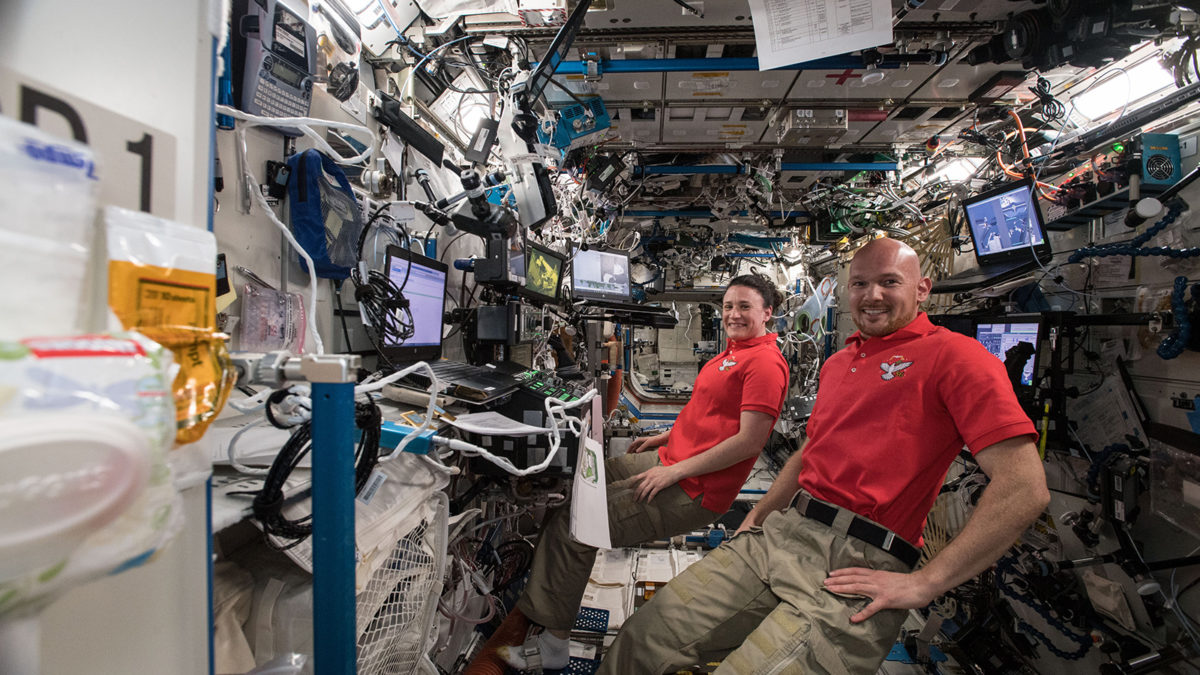After Soyuz accident, NASA weighs January as deadline for bringing station crew home
By Tom Risen|October 11, 2018
NASA and its space station partners face a conundrum of timing after Thursday’s Soyuz rocket accident, which miraculously left the crew of a cosmonaut and an astronaut in shape to walk away and hug loved ones.
Their capsule, which smacked into the Kazakhstan desert, was supposed to dock at the station to deliver crew members and serve as the orbiting lab’s next emergency escape capsule. These capsules must be rotated because their propellant decomposes.
The Soyuz-MS that’s at the station now in this role arrived in June and has a recommended lifetime of “200 days,” said Kenny Todd, NASA’s mission operations manager for the International Space Station, during a press conference livestreamed from Houston. He said “there is a little margin” to that, however.
Because Soyuz rockets and capsules are the only transportation to the station, this means the station partners could face a wracking decision over whether to leave the orbiting lab uncrewed after January. That could be necessary if Russian and NASA investigators have not cleared Soyuz rockets to return to flight by then. The next Soyuz and crew are scheduled to launch in December.
NASA needed nearly three years to start flying space shuttles again after the fatal Challenger launch accident in 1986, for instance.
How long could the station be left uncrewed? Todd said, “I don’t believe that we have a defined time limit” for that, but Todd added that it’s not certain that will be necessary. “We’re going to look at what our options are to make sure we don’t have to de-crew [the] station,” he said.
In the view of James Oberg, a former NASA flight controller and engineer, the Soyuz-MS could carry crew members home safely even after the propellant expiration date. “It would just be a rougher re-entry,” he said.
The hydrogen peroxide propellant “decomposes, which degrades the thrust” of re-entry, he explained. The station crew can monitor how fast it decomposes while it is docked at the station.
“Hydrogen peroxide propellant would re-orient the command module for steering during re-entry, but the heat shield would be pointed forward no matter what, because it is the center of mass for the crew cabin,” he said.
Todd said NASA “will form our own investigation team just as we have with every other failure,” adding that Russia will share information. “The answers we get to our questions are paramount to conducting our own flight review process.”
Reid Wiseman, NASA’s deputy chief astronaut, said during the press conference that he had “complete confidence in the Russians and their work,” praising the effective abort system, and adding: “the Soyuz is a robust, reliable machine.”
NASA Administrator Jim Bridenstine attended the launch at Baikonur with Roscosmos Director General Dmitry Rogozin, and the two met with American astronaut Nick Hague and Russian cosmonaut Alexey Ovchinin when rescue workers flew them back to Baikonur from their capsule landing site.
Bridenstine praised Ovchinin and Hague in a video message after the two were sent to a hospital for precautionary medical checks.
“This has been a very long and productive relationship [with Russia] and we want to make sure it stays strong,” Bridenstine said in the video.
One bit of good news was that supplies launched to the station at the end of September were intended to feed a crew of five. With the current crew of three, “we are going to be just fine,” Todd said.
The European Space Agency photo at top shows two of the space station’s three current crew members, ESA astronaut Alexander Gerst and NASA astronaut Serena Auñón-Chancellor in June.
Related Topics
Human Spaceflight





